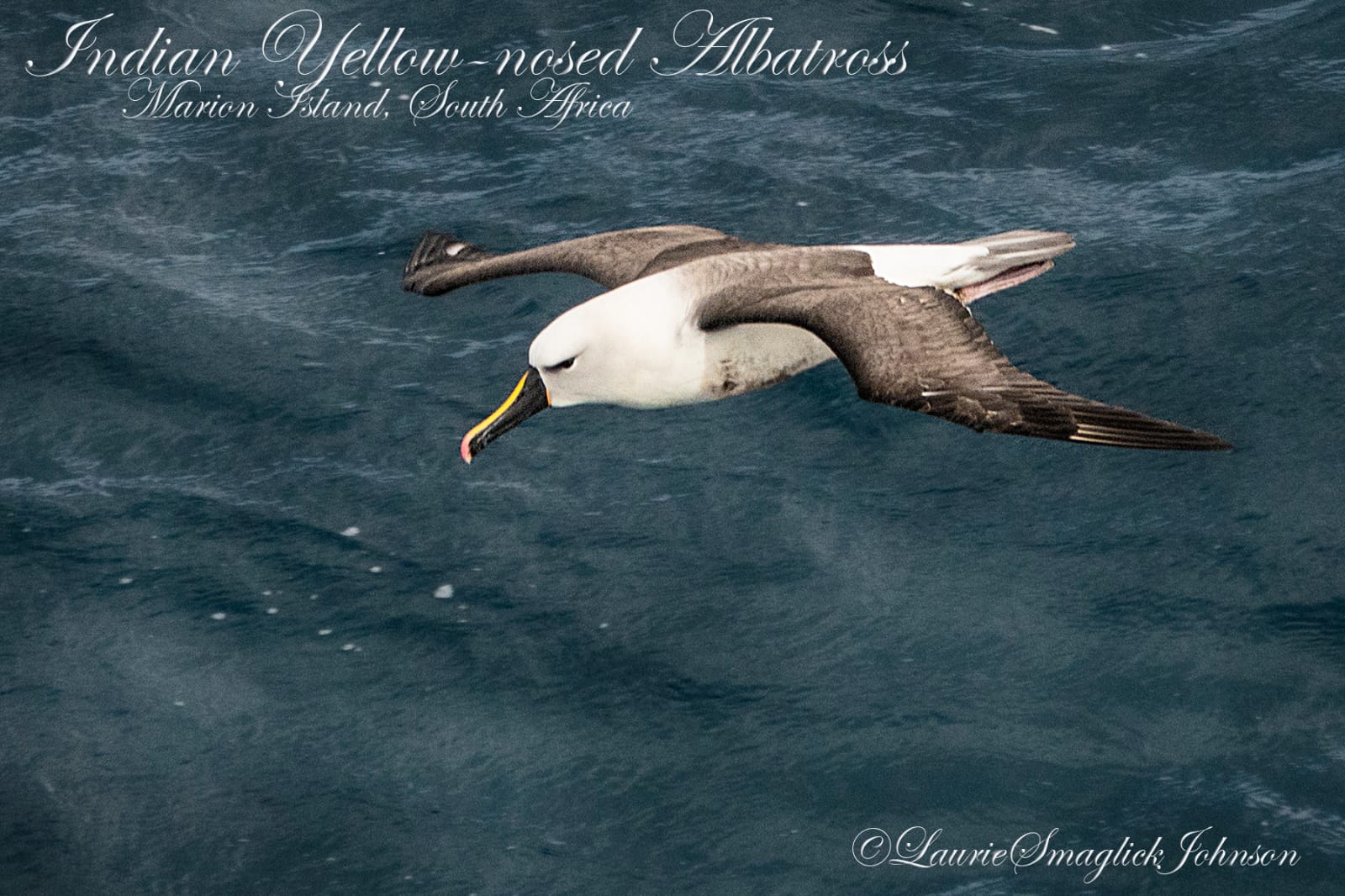 Indian Yellow-nosed Albatross near Marion Island, January 2025, photograph by Laurie Smaglick Johnson
Indian Yellow-nosed Albatross near Marion Island, January 2025, photograph by Laurie Smaglick Johnson
Ryan Reisinger (School of Ocean and Earth Science, University of Southampton, United Kingdom) and colleagues have published in the open access journal CCAMLR Science on data sources for seabird and marine mammal distribution in the southern Indian Ocean.
The paper’s abstract follows:
“Numerous seabird and marine mammal species occur, often in high abundance, in the subtropical and subantarctic zones of the southern Indian Ocean. They breed, moult and rest at French, South African and Australian islands in the region and forage at sea in areas including the Exclusive Economic Zones of these nations, Areas Beyond National Jurisdiction and also the area to which the Convention on the Conservation of Antarctic Marine Living Resources applies. Information on the at-sea distribution of these species is important for understanding ecosystem patterns and processes in the region, and is a key component of any spatial conservation and management frameworks. Information on the distribution of marine predators is widely used to define priority areas for conservation and management, with several such initiatives already having been implemented in the extended Southern Ocean. Seabird and marine mammal distribution has been studied mainly using two methods: animal-borne biotelemetry/biologging and at-sea sighting records. Here, we give an overview of data on the distribution of marine mammals and seabirds – collected mainly through long-term tracking programmes at French and South African islands – with the aim of identifying data sources that can inform pelagic ecoregionalisation to support spatial conservation and management planning in this region. We identify priorities for further distribution data collection related to life-history stages, sites and species and we identify broader challenges for understanding marine predator distribution in this region, towards spatial conservation and management planning.”
Reference:
Reisinger, R.R., Makhado, A.B., Delord, K., Bost, C.A., Lea, M.A. & Pistorius, P.A. 2025. Towards higher predator ecoregionalisation of the pelagic zone in the subantarctic and subtropical Indian Ocean. CCAMLR Science 25: 117-132.
John Cooper, Emeritus Information Officer, Agreement on the Conservation of Albatrosses and Petrels, 22 August 2025

 English
English  Français
Français  Español
Español